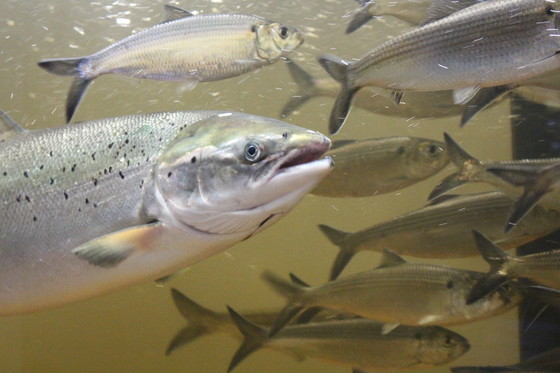 An Atlantic salmon makes her way through the Milford Fish Lift and upriver to spawn in the Penobscot. C. Daigle, 2014.
Maine’s Penobscot River has more than 100 dams, many of which are aging and no longer serve their original purpose. Removing dams is becoming more common, with the purposes of addressing hazards posed by these aging dams, returning natural river flow and function, or both.

For Atlantic salmon and other species of sea-run fish, the last 200 years of dammed rivers and disconnected streams have, combined with historic fisheries and lower marine survival, spelled decline, and for Atlantic salmon, disaster. The storied Atlantic salmon runs had fish returning by the thousands to Northeast rivers. They are now limited to just a few rivers in Maine, with fewer than 2,000 fish returning each year. These runs are heavily reliant on hatchery-raised fish. The Penobscot River is home to the largest remaining population of endangered Atlantic salmon in the United States. Dams have been identified as one of the primary factors in the decline of Atlantic salmon.
Photo caption: Penobscot Monitoring Coordinator, Molly Payne Wynne, holds a freshly tagged shortnose sturgeon just before release back into the Penobscot River. M. Altenritter, 2017.
Over the last decade, researchers have been studying whether removing two Penobscot River dams in 2012 and 2013 improved ecosystem conditions for salmon and other aquatic species. So far, results are promising.
|
Read the whole story on our website.
|